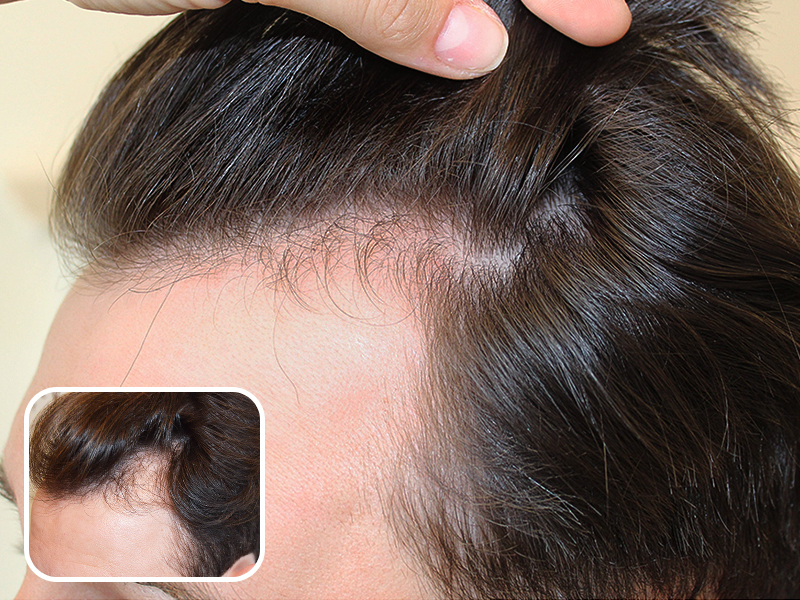
For many people, a hair transplant may seem like the default solution for thinning hair. But not everyone is ready, or suited for surgery.
That’s where Platelet-Rich Plasma (PRP) therapy comes in. This non-surgical treatment is becoming increasingly popular for restoring hair naturally, without scalpels or lengthy recovery. At the International Trichology Society (ITS), trichologists are helping people understand how PRP works and whether it could be the right step in their hair restoration journey.
In this article, we’ll explain what PRP therapy involves, how it differs from transplants, and why trichologists often recommend it as part of a natural approach to treating hair loss.
What Is PRP Therapy in Trichology?
PRP therapy is a scientifically grounded treatment that uses your body’s own growth factors to stimulate hair follicles. The process is straightforward: a small sample of your blood is drawn (similar to a routine check-up) and placed in a centrifuge. The machine spins the sample to separate platelet-rich plasma from the other components.
This concentrated plasma, rich in growth factors, is then carefully injected into areas of thinning hair. Once introduced into the scalp, the platelets release proteins that help “wake up” dormant follicles, encouraging healthier, stronger, and denser growth. Because it uses your own blood, PRP is completely natural and avoids the risks of synthetic substances or allergic reactions.
How PRP Differs from Hair Transplants
Hair transplants remain a well-established option, particularly for advanced hair loss. They involve moving follicles from one area of the scalp to another, providing a permanent solution for bald patches. However, transplants are a surgical procedure, requiring incisions, longer recovery times, and higher costs.
By contrast, PRP is non-invasive. No cutting or stitching is involved, and the session typically takes less than an hour. Most people return to their daily activities immediately. While transplants can deliver instant density, PRP works gradually, strengthening existing hair and stimulating new growth over several months.
For those in the early stages of hair thinning or people seeking a gentler, non-surgical option, trichologists often recommend PRP as an effective alternative or complementary therapy.
The Benefits of PRP Therapy for Hair Loss
PRP offers several key benefits that align with trichology’s emphasis on natural and science-backed treatments.
Because it is derived from your own blood, PRP is biocompatible, eliminating concerns about rejection or adverse reactions. Research papers, including those published by Johns Hopkins University, have shown PRP’s effectiveness in improving hair density and reducing shedding after just a few treatments.
Trichologists also value PRP’s versatility. It can be used to treat conditions such as androgenetic alopecia (male and female pattern baldness), diffuse thinning, or even as a supportive therapy after a hair transplant to promote better healing and stronger results.
Downtime is minimal—aside from some mild tenderness at the injection site, most patients resume normal activities straight away. Visible improvements usually appear within three to six months, with continued gains over the first year. Maintenance sessions can then help sustain long-term results.
What to Expect from PRP Treatment
A typical PRP session lasts less than an hour. After the blood draw and centrifuge process, your trichologist applies the PRP directly into thinning areas of your scalp using fine injections. While some people may experience mild discomfort, the procedure is generally well tolerated.
Initial changes, such as reduced shedding, can often be noticed within a couple of months. Stronger regrowth and improved thickness usually take six to twelve months to fully develop. Trichologists generally recommend an initial course of treatments, often spaced a month apart, followed by occasional maintenance to preserve results.
Is PRP Therapy Right for You?
PRP is not a universal cure for every type of hair loss, but it works particularly well when follicles are still present but underperforming. This makes it especially effective in cases of androgenetic alopecia or early-stage thinning.
A consultation with a trichologist is essential, as they can assess your scalp health, hair density, and medical history to determine if PRP is a suitable option. In some cases, trichologists may combine PRP with other therapies, such as nutritional support, low-level laser therapy, or topical treatments, for a more comprehensive approach.
For those who are not ready for surgery, or who want to support the results of a transplant, PRP offers a safe, natural, and scientifically validated pathway to hair restoration.
Expert Guidance from the International Trichology Society
The International Trichology Society (ITS) is dedicated to advancing evidence-based treatments for hair and scalp disorders. Its accredited trichologists are trained to guide patients through options like PRP therapy, ensuring each treatment plan is personalised and medically sound.
If you’re experiencing thinning hair or early hair loss, ITS can connect you with trusted trichology professionals who will help you explore PRP therapy and other non-surgical solutions to restore confidence and promote long-term hair health.
FAQ: PRP Therapy in Trichology
Here are some commonly asked questions about PRP therapy for hair restoration:
How does PRP therapy for hair loss work?
PRP uses concentrated platelets from your own blood, injected into the scalp. These platelets release growth factors that stimulate dormant follicles, improving density and hair strength.
Is PRP therapy a replacement for hair transplants?
Not always. PRP is best for early-stage hair loss or thinning, while transplants are more suited to advanced baldness. Trichologists often recommend PRP as an alternative or a complementary therapy.
How long do PRP results last?
Results can last 12 months or longer, but maintenance sessions are usually recommended to sustain improvements in density and growth.
Are there side effects to PRP hair treatment?
Because PRP uses your own blood, risks are minimal. Mild redness, tenderness, or swelling may occur but usually resolve within a day or two.
How many PRP sessions will I need?
Most people require three to four sessions spaced a month apart, followed by periodic maintenance. Your trichologist will recommend a schedule tailored to your condition.
